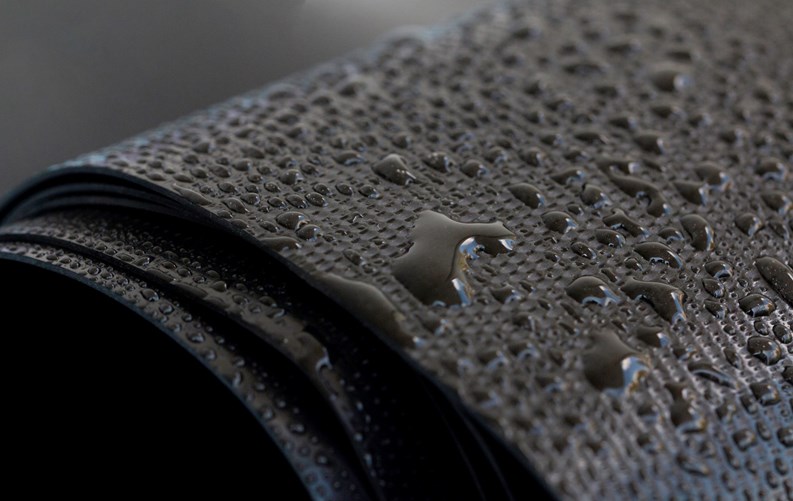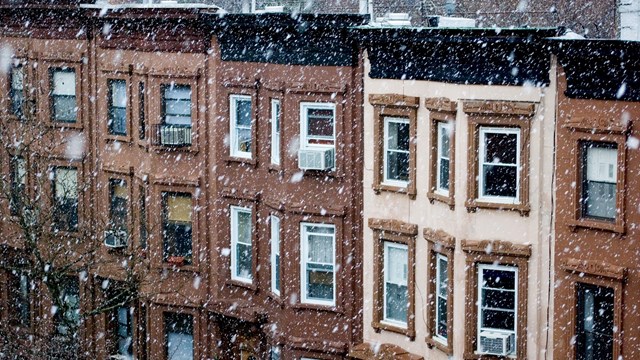As the leaves change and the weather cools, it’s time to make like the squirrels and start preparing for winter. For shared interest communities, that often means dusting off the winter snow-removal supplies and equipment, from shovels and brooms to protective mats to preserve your entry hall flooring. Snow, ice and salt can have a deleterious effect on floors, rugs, and even furniture in your lobby. Here’s a few recommendations to help you prepare most effectively for the coming cold season.
The Gold Standard
The most effective and “coolest” technology available, according to Marilyn Sygrove, principal of Sygrove Interior Design Services, is sidewalk heating elements.
“Installing heating elements installed under the sidewalk at the entrance to your lobby is a fantastic way to keep moisture outside,” she says. “They ensure the lobby floor remains dry - and your building staff will love you for it. They eliminate the need to shovel and use harmful ice-melting chemicals to keep the sidewalk dry and clear. Sidewalk heating elements can be installed outside any building. Many residential developers tout them as an amenity. But let’s face it, most New York City apartment dwellers don’t always have the luxury of heated sidewalks.”
Low(er) Tech
In the absence of sidewalk heating units, mats become the front line in fighting potentially damaging dirt and salt in your lobby. And while certainly not a recent invention, all floormat technology is not created equal; there are updated, improved versions that provide better coverage and protection than in the past.
“The good news,” Sygrove says, “is lobby mats don’t have to be ugly. Today, mats are available in a myriad of colors, styles, and textures.” Sygrove goes on to describe several types of mats that might work for your building.
“High-Low pile nylon mats are an excellent choice for lobbies because of the way they handle water and dirt,” she continues. “The high pile dries off the bottoms of shoes while the nasty grit, salt, sand and dirt drops into the low pile areas. If you want a natural look, cocoa mats can also fit the bill. However, they do not wear as well as nylon mats and can be ruined after a couple of severe winters.”
Today, high-low mats are available in a wide range of colors and border motifs. They can even be embossed with your building’s address and logo to complement your building’s architecture and style.
Another option is inset mats. “Keep in mind that if your lobby has recessed entry vestibule mats,” cautions Sygrove, “be mindful of the height of the well in the floor and the thickness of the material when replacing them. I’ve worked on many lobby rehab projects where a well-meaning staff had ordered replacement mats that were way too thick, and it created a tripping hazard.
Runners
Anyone who has lived in a New York apartment building can conjure images of those awful black rubber runners that scar the lobby with the first snow. Many buildings leave them down all year round - which is not only ugly, but causes them to wear out quickly. Runners are not intended to be a permanent design element no matter how lovely they are. They should complement your lobby, not detract from it - so augment your inset mats with runners only during inclement weather.
Sygrove says, “While many mats used in lobbies are made from vinyl, I do not recommend them. While vinyl provides traction, it doesn’t absorb water and becomes a soggy mess in bad weather. Synthetic rubber-backed mats with carpet-like material on top are a much better choice. Absorbent and lightweight, they come in a huge selection of patterns and colors to coordinate with lobby interiors.”
While winter and its accompanying tough weather may dull the look of your lobby, there are choices that can minimize its effect. Choose wisely with both optics and safety in mind.
Next Time: Removing those stubborn stains from your common area floor coverings.










Leave a Comment